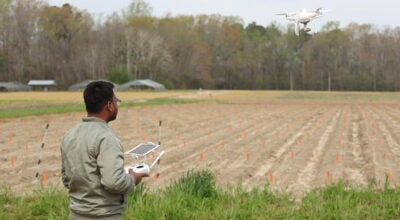Trains to speed up
Published 9:31 pm Friday, August 15, 2014
An increase in train speeds through downtown Suffolk effective Sept. 2 will mean better traffic flow in the area and increased public safety, according to a Norfolk-Southern spokesman.
“It’s primarily so that Amtrak trains can move through there faster,” said Robin Chapman with Norfolk-Southern. “The trains will get through the intersection faster, and it will benefit Norfolk-Southern by enabling us to get our trains through there more efficiently.”
The speed for Norfolk-Southern intermodal and Amtrak passenger trains through downtown Suffolk will increase from 40 to 60 miles per hour. For freight trains, it will increase to 50 mph.
The public crossings affected are at Capital, Liberty, Washington, Commerce, South Main, South Saratoga and Wellons streets, Chapman said. The segment of line averages about 25 to 30 trains per day, he said.
Chapman said the warning devices at the crossings have been adjusted to activate when the faster-moving trains are approaching.
“Statistics show there are actually more car-train collisions when trains are going at slower speeds,” Chapman said.
He urged motorists to “be alert to signals at crossings” and “never try to beat the train.”
Operation Lifesaver, a public education program dedicated to ending collisions, deaths and injuries involving railroads, offers the following safety tips:
- Freight trains don’t travel at fixed times, and schedules for passenger trains change. Always expect a train at each highway-rail intersection.
- All train tracks are private property. Never walk on tracks; it’s illegal trespass and highly dangerous. By the time a locomotive engineer sees a trespasser or vehicle on the tracks, it’s too late. It takes the average freight train traveling at 55 mph more than a mile — the length of 18 football fields — to stop. Trains cannot stop quickly enough to avoid a collision.
- The average locomotive weighs about 400,000 pounds or 200 tons; it can weigh up to 6,000 tons. This makes the weight ratio of a train to a car proportional to that of a car to a soda can.
- Trains have the right-of-way 100 percent of the time over emergency vehicles, cars, the police and pedestrians.
- A train can extend three feet or more beyond the steel rail, putting the safety zone for pedestrians well beyond the three-foot mark. If there are rails on the railroad ties, always assume the track is in use, even if there are weeds or the track looks unused.
- Trains can move in either direction at any time. Sometimes their cars are pushed by locomotives instead of being pulled.
- Any approaching train is always closer, moving faster, than you think.
- Remember to cross train tracks only at designated pedestrian or roadway crossings, and obey all warning signs and signals posted there.
- Stay alert around railroad tracks. No texting, headphones or other distractions that would prevent you from hearing an approaching train; never mix rails and recreation.
For more information about safety around railroad tracks, visit www.oli.org.






